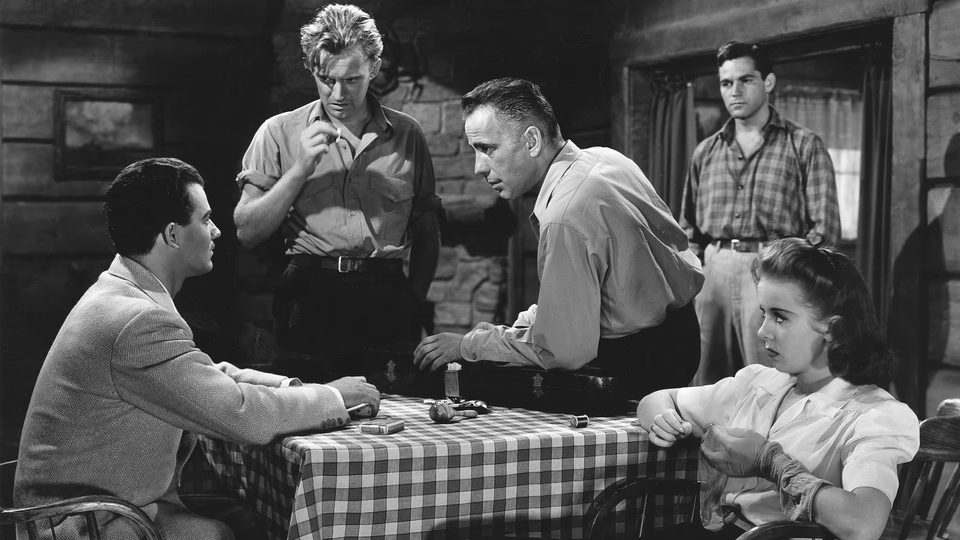High Sierra

Humphrey Bogart plays Roy Earle, a career thief sprung from prison by an aging gangster for a jewel robbery at a resort hotel in the Sierra Nevada mountains. The job goes south and Earle ends up on the run with a jaded dance hall girl, played by Ida Lupino. Spoilers follow.
The film represents a significant step forward for Bogart. Yes, Earle is a crook, but he’s miles from the inarticulate, one-dimensional heavies that dominated Bogart’s career up to this point.
Earle’s middle-aged, with gray temples that had me thinking Bogart had gone blonde until he removed his hat. The heightened wise-guy accent that dominated Bogart’s prior turns is gone. Instead, Earle’s voice carries a perpetual weariness that conveys authority born of experience.
This mature veneer heightens his menace. When his anger rises, it feels feral and dangerous. Bogart’s now trademark twitching lip originated with this role, surfacing when Earle’s agitated.
As Earle makes his way to California, he chances upon a salt-of-the-earth family heading west. Dreaming of a post-heist future, Earle takes a shine to the clubfooted daughter Velma.
After arriving in California, Earle meets his crew. Arthur Kennedy convinces as one of the green accomplices, and top-billed Lupino threads a fine line as Marie. Charismatic enough to seize our interest, but not so much that we can’t buy Earle ignoring her for Velma.
Joan Leslie surprised me as Velma. When Earle first asks her outside and she reacts to the night air with a huge smile, saying, “Isn’t it grand!” I was ready to write off her performance as cloying.
But later, after Earle forks over a chunk of dough for her surgery, she transforms into a hedonistic terror. Breaking our hearts and Earle’s. Lupino shines here. She enters the scene determined to sabotage her rival, but when she sees Earle’s despair, her demeanor changes and Lupino conveys volumes of empathy without saying a word.
But she’s not above needling him. In the car after, she says, “You don’t love her anymore, do you?”
“No,” Earl replies, aware of her motive. “If you weren’t sure you wouldn’t have asked me.”
As mentioned, the robbery goes bad. Earle and Marie escape with the loot, but must wait to convert the jewels to cash. They hide out, but are soon at each other’s throats. The blanket press coverage leads to their discovery and Earle puts Marie on a bus to Vegas.
Roadblocks force Earle to flee into the mountains, the cops in pursuit. In a memorable shot, we see his car winding up a twisty mountain road. Without cutting, the camera pans back and tilts down and we see the cops heading up the same road, hot on Earle’s tail. He holes up at the base of Mount Whitney, locked in a standoff with a growing crowd of police and reporters.
The ending sees Lupino wailing with weepy violins swelling on the soundtrack. Perhaps director Raoul Walsh couldn’t resist, but I suspect a quieter ending would have packed a bigger punch.